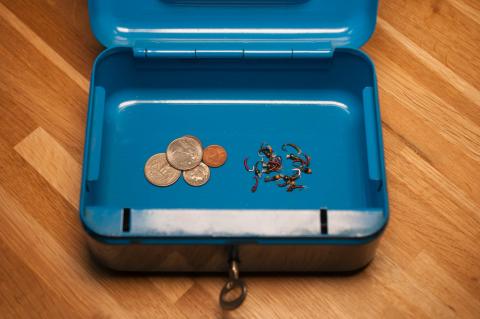Recent comments
three of your mundane worms are drying at the vice, together with 6 polar Magnus, the itch in the right hand is getting worse....
TL
Florian :lol: :lol:
- Log in to post comments
Beware of any veiled requests or "We can not get this marerial in the US. Some items have dissapeared from the shelves of fly tying materials in both Canada and the US, on Ethical Grounds. P.E.T.A backed. Do not agree via any web means to obtain items requested and offer to send these out by post or any other means. These veiled request are appearing more and more on You Tube and other sites. Don't get your fingers burnt.
- Log in to post comments
Mike,
The flattened hooks aren't necessarily fly hooks, although we do see older flattened fly hooks now and then. These hooks are usually referred to as spade end hooks, and the idea is that you tie your line around the hook shank ands let the knot slide forwards to the flat part, which stops it from sliding off.
As you can imagine this is not really practical on flies, where the material will fill up the shank. On some really small hooks - like size 28-30-32 - where an eye is almost impossible or at least very hard to forge, you sometimes see spade ends, and here you will again tie the tippet on before you tie the fly, so that it will be permanently attached. But such hooks are rare - both the sizes and the spade forging.
Mustad has a page with some examples of different hook eyes - for all kinds of hooks - mostly bait hooks. The only type not mentioned is the blind eye hook, which has no eye, like the one used for the flies in this article.
You can see a blind eye and a spade end hook compared on this illustration. The top one will be fitted with a gut eye as described in the article the bottom one is tied onto the line with a knot as shown.
Martin
Darren, today's streamer was superb! You outdid yourself!
- Log in to post comments
I've never seen this pattern before Darren. Very nice! I can't see the blue in it, but I bet it is a supreme imitation in the water.
- Log in to post comments
Thanks Kelly. I love Duane's patterns, and especially this one. hopefully we'll see a few originals before the year is up. The blue is the light grey dun also called a blue dun.
- Log in to post comments
Martin,
Thank you for writing me back on this. I not only find tying relaxing but it is also just plain fun to try to tie a fly that most closely emulates the actual insect etc. that I am trying to copy. I have learned so much from your web site and I am grateful that you and others share your skill and knowledge with us all. I have seen a type of hook that has a flattened nub at the eye end of the hook is this the kind of hook that should be used for this type of application? I have also seen another kind of hook that has a flange that bends back towards the gap of the hook but is left open. I think this may also be a hook style that can be used for this application too. It is hard to see on the photos what the eye end of the hook looks like so I thought I would ask you about these for clarification. Again, thank you for your awesome site.
Jan, Nice looking terrestial and well tied giving a good balance, of materials with good floating properties and colours. Have you tried it with "Wonder Wing" wings it looks great same colours as is or white/silver feather, can not wait until April to try it out. It should do well in Canada later on this year.
Many Thanks for sharing this one with us.
Tight Lines
If anyone is interested in a copy of the Catch and Release artwork by David Footer, featuring the Maine Game Warden streamer, check here - http://davidfooter.com/?df_product=catch-release-2
- Log in to post comments
You both did a wonderful job on the Supervisor. Thank you for the wonderful homage to Joseph S. Stickney's iconic streamer.
- Log in to post comments
Don, these streamers are outstanding. I am going to have to try tying some of these.
- Log in to post comments
Love the colors on this streamer. Beautifully tied.
- Log in to post comments
Thanks for this site. I am still new to fly fishing, but it has taken over my life. And now I'm tying my own flies! Lot's of fun and with a site like this... it's getting scary about the amount of flies I am tying!
- Log in to post comments
Ok... I really like the way Davie does his video's. My problem is what am I going to do with all the flies I've been making after watching these video's?
- Log in to post comments
And Yet another great fly tying video! I'm getting this down too!
- Log in to post comments
Brad,
If you hold the rod with your left hand, the handle should be on the right side of the reel so that you can wind with your right hand. Looking at the reel from the handle side, it should wind the line in when turned clockwise and spin counterclockwise when you pull line off the reel. Remember that the reel hangs under the rod and the reel foot is up and that the line comes out from the underside of the reel. Any braking action should also happen when you pull line off the reel.
Martin
- Log in to post comments
Ralph,
As most on zonkers, the tail can wrap around the hook, but I haven't found it to be a massive problem, and even with the fairly long tail it works fine for me. It happens, but I check the fly regularly and untangle it if there's trouble.
As usual when fishing heavier flies and stuff that can tangle, I can recommend a slower casting stroke. That keeps things from tangling quite as much as the wildly energetic double hauls that people seem to love these days - at least on our coasts.
Martin
- Log in to post comments
Florian,
I never tied or fished any of the double hook/wire thingamajigs. I'd hate tying them and honestly, most of them don't look that convincing once they get in the water because they use pretty stiff wire. I have seen some tied with marabou and spun spinning line (GSP, Dyneema, Fireline type) and they look OK.
The steelhead fly called the MOAL (Mother Of All Leeches) is also pretty convincing. I'm working on an article about the MOAL. I wouldn't probably tie and fish it myself on a regular basis, but it's pretty successful in the northwestern US and BC.
For my own use I stand by the Woolly Bugger style, the Omoe Brush and the zonker pattern that I tied for the first time some years ago.
Martin
- Log in to post comments

